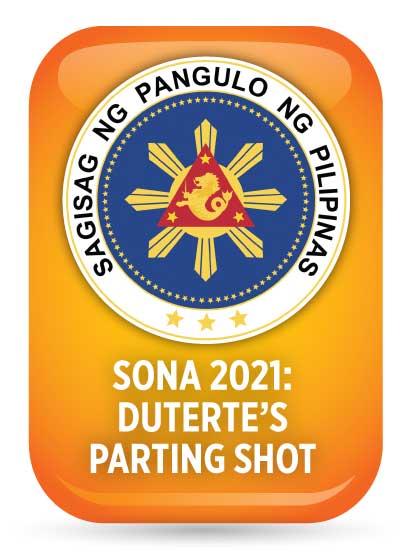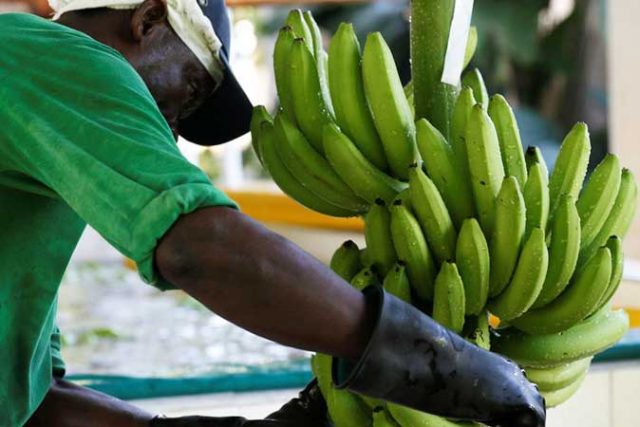By Luz Wendy T. Noble, Reporter
BANKING INDUSTRY players are batting for the passage of priority measures and improved implementation of existing laws to help a pandemic-hit sector regain its strength and spur economic activity.
Even before the Duterte administration’s term, the Philippine banking industry has undergone many years of reforms to build its buffers against risks in the aftermath of the Asian Financial Crisis and the Global Financial Crisis. Various laws meant to help boost financing for agriculture and small businesses — both key sectors of the economy — were also passed.
 These reforms were recently put to the test as the coronavirus pandemic all but halted economic activity, leaving many big and small businesses and consumers strapped for cash.
These reforms were recently put to the test as the coronavirus pandemic all but halted economic activity, leaving many big and small businesses and consumers strapped for cash.
“The regulatory requirements in the past years coupled with favorable banking conditions were such that at the onset of the pandemic, the banking system had significant capital and liquidity buffers built up to allow it to face the storm head on,” Security Bank Corp. Chief Economist Robert Dan J. Roces said in an e-mail.
With the current administration’s term ending in less than a year, the banking industry hopes for a more inclusive implementation of the Financial Institutions Strategic Transfer (FIST) Law to help smaller lenders, as well as the enactment of reforms in rural banking and amendments to the Agri-Agra and bank secrecy laws.
Republic Act 11523 or the FIST Law signed in February allows banks to offload loans and real and other properties acquired (ROPA) considered as nonperforming until Dec. 31, 2022 to FIST corporations, letting them clean up their balance sheets after borrowers were unable to pay their obligations due to the pandemic’s economic impact.
Bankers Association of the Philippines President Jose Arnulfo A. Veloso said the measure will help lending rebound as banks have been reluctant to provide credit due to the crisis. Outstanding loans by big banks declined for the six straight month in June by 4.5% despite liquidity-infusing measures from the central bank.
“This will allow banks to maintain sufficient liquidity that will facilitate continuous supply of credit to businesses and individuals stimulating growth and revitalizing the economy in the long run,” Mr. Veloso said in an e-mail.
However, the measure may not help smaller banks much as its scope is limited, the Rural Bankers Association of the Philippines (RBAP) said.
“This new law does not include clear provisions for unsecured credit exposures, which majority of rural banks have in lending to asset-less small farmers and micro-enterprises,” RBAP said in an e-mail.
This could be remedied by improving the implementing rules and regulations of the law to mandate FIST corporations to purchase assets from rural lenders as well, Rural Bank Research and Development Foundation, Inc. Chairman Elizabeth C. Timbol said.
“A certain percentage of their portfolio should include nonperforming assets and nonperforming loans from the rural banks. Otherwise, no FIST corporations will look into countryside assets but rather center more on the universal and commercial banks, totally disregarding the rural banks in the process,” Ms. Timbol, a former RBAP president, said in an e-mail.
AGRI-AGRA, RURAL BANKING REFORMS
Smaller lenders are also hoping for the enactment of amendments to Republic Act 10000 or the Agri-Agra Reform Credit Act of 2009 before the Duterte administration’s term ends. The measure is part of the priority bills of the Legislative-Executive Development Advisory Council targeted to be passed by June, but it is still pending in the Senate.
“The amendments to the Agri-Agra Law are of paramount importance to us. We support a bill in the Senate which will overhaul the law and merge the allocation with no distinction, aimed at improving banks’ compliance with their mandate to set aside 25% of their loanable funds to farmers and fisherfolk; and widen the extent of what the banks can lend out since the economy is now very much different,” Chamber of Thrift Banks Executive Director Suzanne I. Felix said in an e-mail.
“Amendments to the Agri-Agra Law [will] allow banks other means to provide financing assistance to the agriculture sector and…to support more realistic compliance,” Development Bank of the Philippines (DBP) President and Chief Executive Officer Emmanuel G. Herbosa added.
The Agri-Agra Law mandates lenders to allocate 25% of their credit line to the agriculture (15%) and the agrarian reform sectors (10%). However, banks have preferred to incur penalties rather than lend to these sectors, which they consider to be risky. The Bangko Sentral ng Pilipinas (BSP) estimates that banks have paid around P2 billion in penalties yearly since 2011 for noncompliance with the law.
BSP data showed banks’ agri-agra loans rose 10% to P765.92 billion in the first quarter from P696.35 billion a year earlier. Still, this was just 10.59% of banks’ total loanable funds in the period — well below the 25% quota.
The central bank has already imposed an interim measure allowing more activities to be counted as part of the required lending under the law as they await the passage of the amendments. This has already helped improve compliance, the RBAP noted.
“However, even a single measure to capacitate further the compliant institutions, particularly rural banks with their long-standing performance of having the highest compliance rate is notably missing,” the RBAP said.
“If the situation is unchanged and banks remain risk-averse as the economy remains sluggish, less and less credit exposures will go to the agricultural sector which would lead to lower agricultural productivity,” it added.
The rural banking community is likewise hoping for the passage of the proposed Rural Banking Act of 2021. House Bill 4256, which will grant tax exemptions to rural banks, was approved at the committee level in May.
“The Rural Banking Act of 2021 would broaden the rural banks essential financial services to the most marginalized sectors of society thus widening the inclusion of rural communities into the financial sphere,” Ms. Timbol said.
The chair of the House Committee on Banks and Financial Intermediaries said they consider these measures as priorities as they will help the banking sector become more resilient.
“What will really be very beneficial to the banking industry and make them resilient is Agri-Agra Law amendments. It will ease the burden on the banking industry by way of expanding the scope of compliance and really address the root problem of why the banks that really have the resources to lend are unable to comply,” Quirino Rep. and committee chairman Junie E. Cua said in a phone interview.
“We also need to strengthen the rural banking system because they help out smaller entities. We want to provide more funds to the countryside through the Rural Banking Act and through the Cooperative Bank charter amendments, and the amendment of the Agri-Agra,” Mr. Cua added.
BANK SECRECY
A bill seeking to amend the Bank Secrecy Law is up for second reading approval at the House. It is also considered a priority measure for the Senate, according to Senator Grace Poe-Llamanzares.
“There are a lot of pending bills on the Bank Secrecy Law, which need to be deliberated on or passed as the current situation makes it difficult for everyone, especially the ordinary Filipinos, who require the movement of money in and out of the country. The banking sector is very much affected as its core business is deposits, remittances, and settlements,” DBP’s Mr. Herbosa noted.
Mr. Herbosa also hopes deliberations on the Comprehensive Tax Reform Package (CTRP), as well as the Government Financial Institutions Unified Initiatives to Distressed Enterprises for Economic Recovery (GUIDE) bill, will also be prioritized by Congress.
He said the CTRP will help complete the implementation of the packages of the Tax Reform for Acceleration and Inclusion or TRAIN Law, while the GUIDE bill “will strengthen the capacity of the GFIs to provide the needed assistance to MSMEs (micro, small and medium enterprises), especially the strategically important companies.”
Ms. Poe-Llamanzares added that the Senate is also working on amendments to the Philippine Deposit Insurance Corp. and Philippine Veterans Bank’s charters, as well as the Financial Consumer Protection Act, which the BSP has tagged as a priority measure.
Security Bank’s Mr. Roces said ongoing reforms in the banking sector will help lenders adapt and thrive amid the changing operating environment caused by the pandemic, even beyond the current administration’s term.
“There likely will be a larger engagement by the industry in the digital space, with the use of digital platforms fast-tracked by the community quarantines. There could also be a focus on differentiated client service propositions,” he said.
















 These reforms were recently put to the test as the coronavirus pandemic all but halted economic activity, leaving many big and small businesses and consumers strapped for cash.
These reforms were recently put to the test as the coronavirus pandemic all but halted economic activity, leaving many big and small businesses and consumers strapped for cash.











